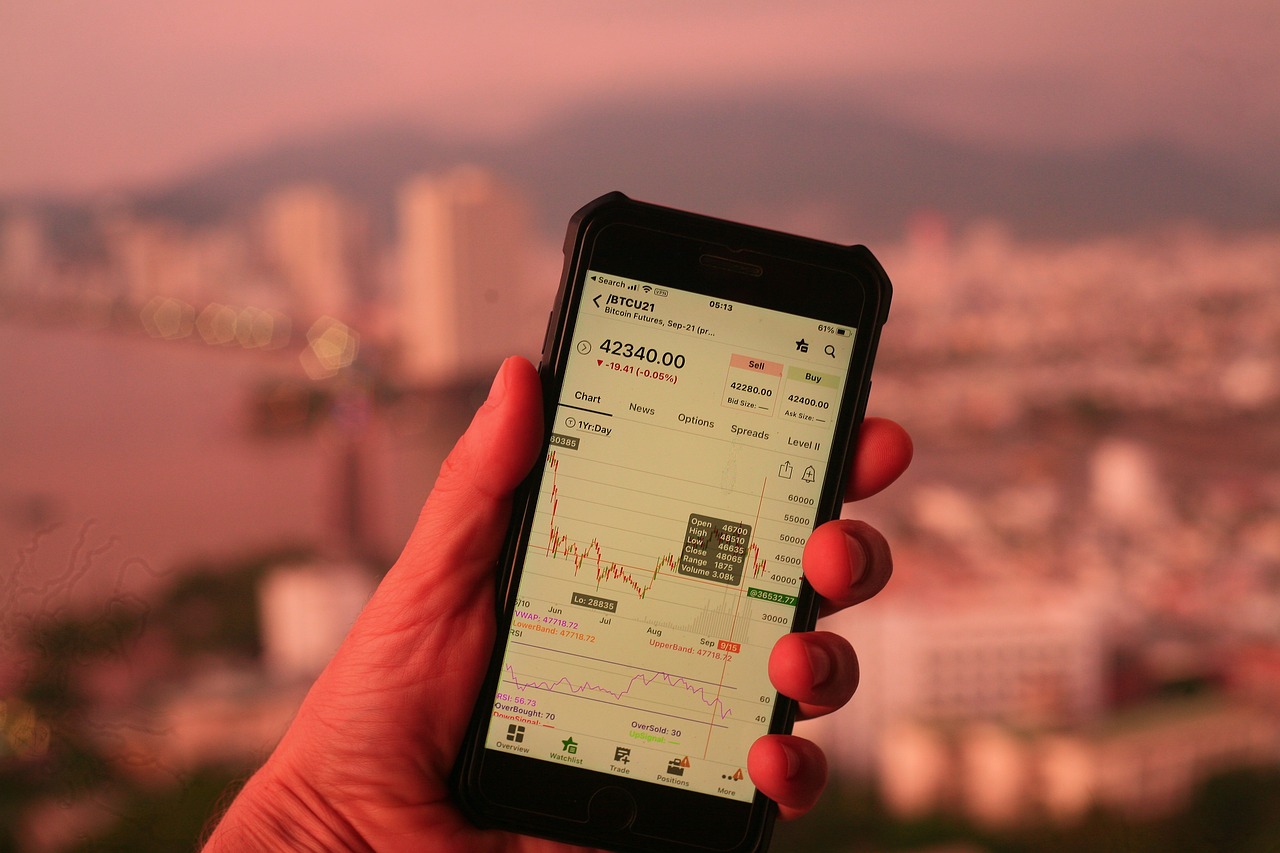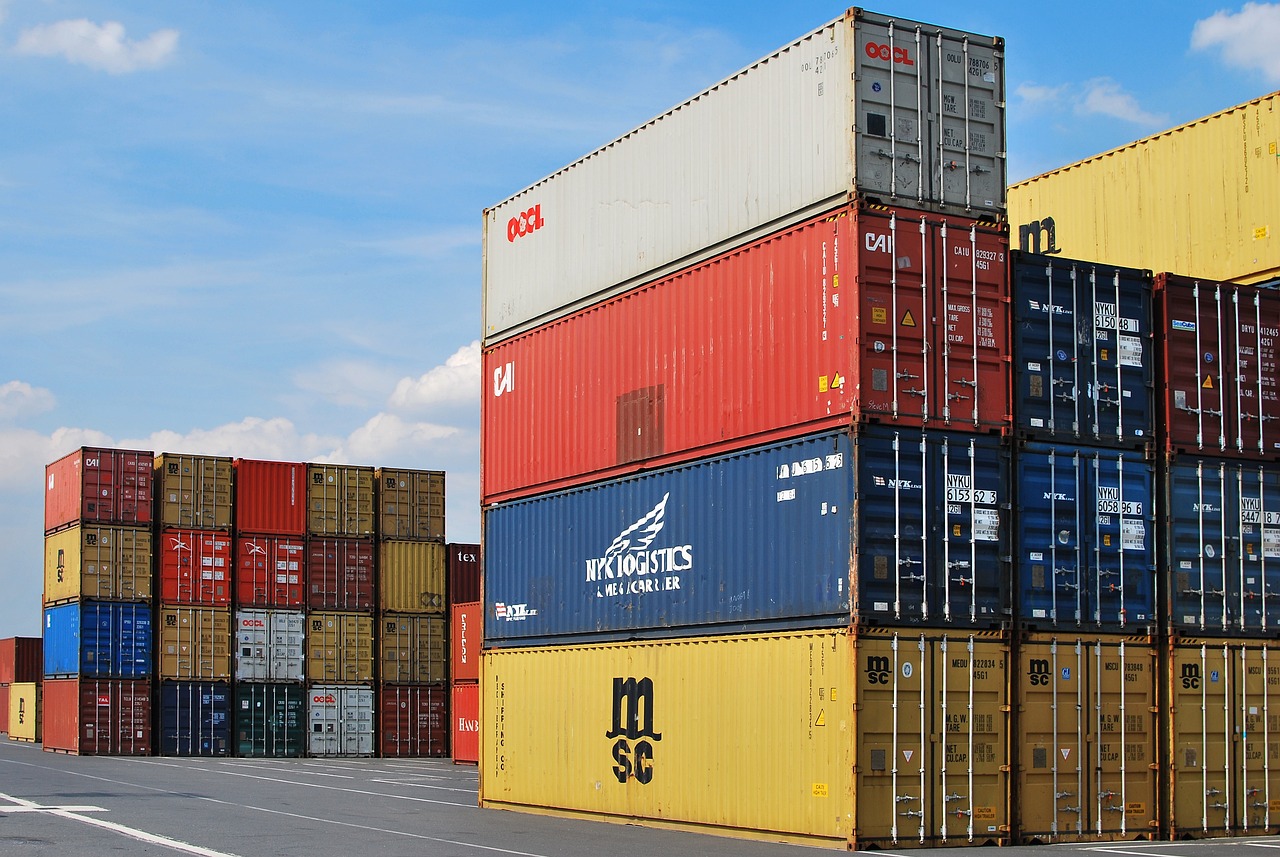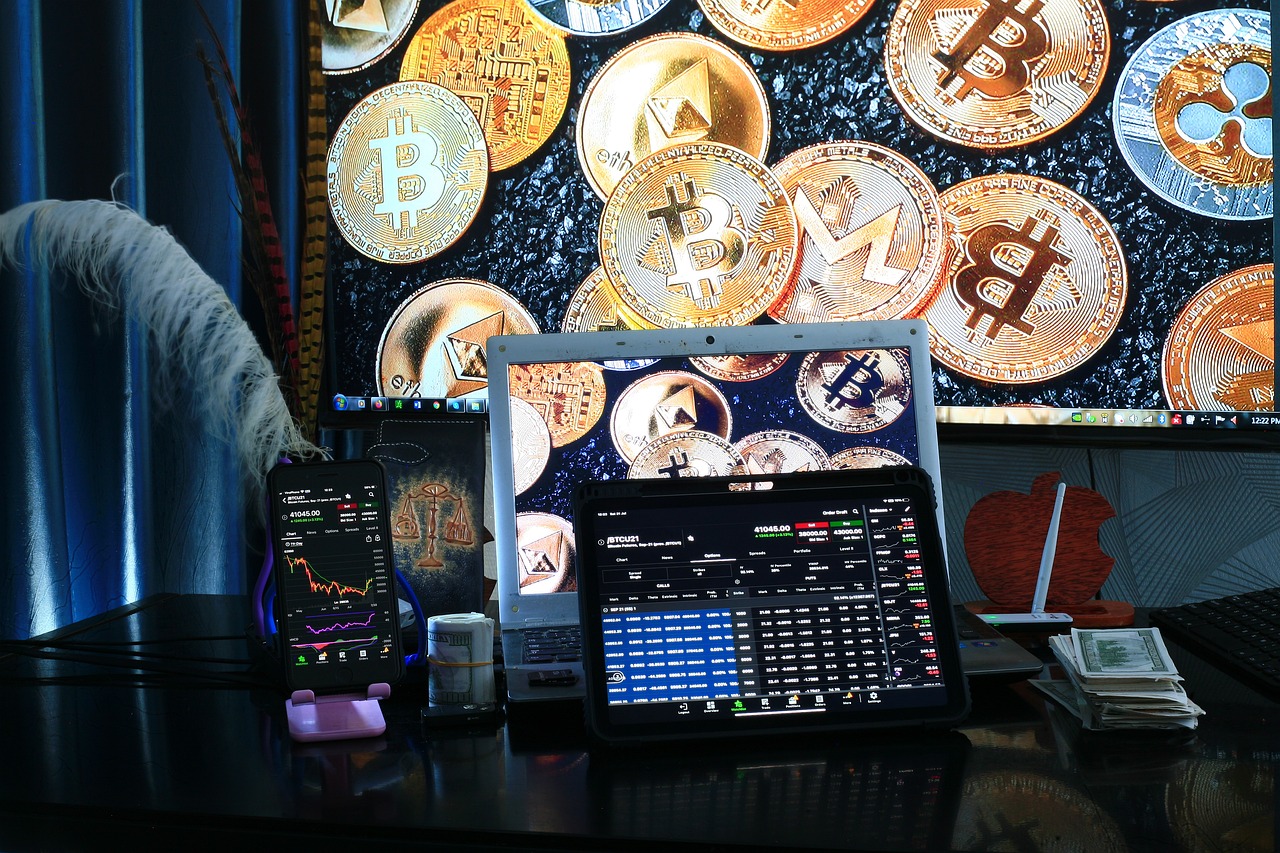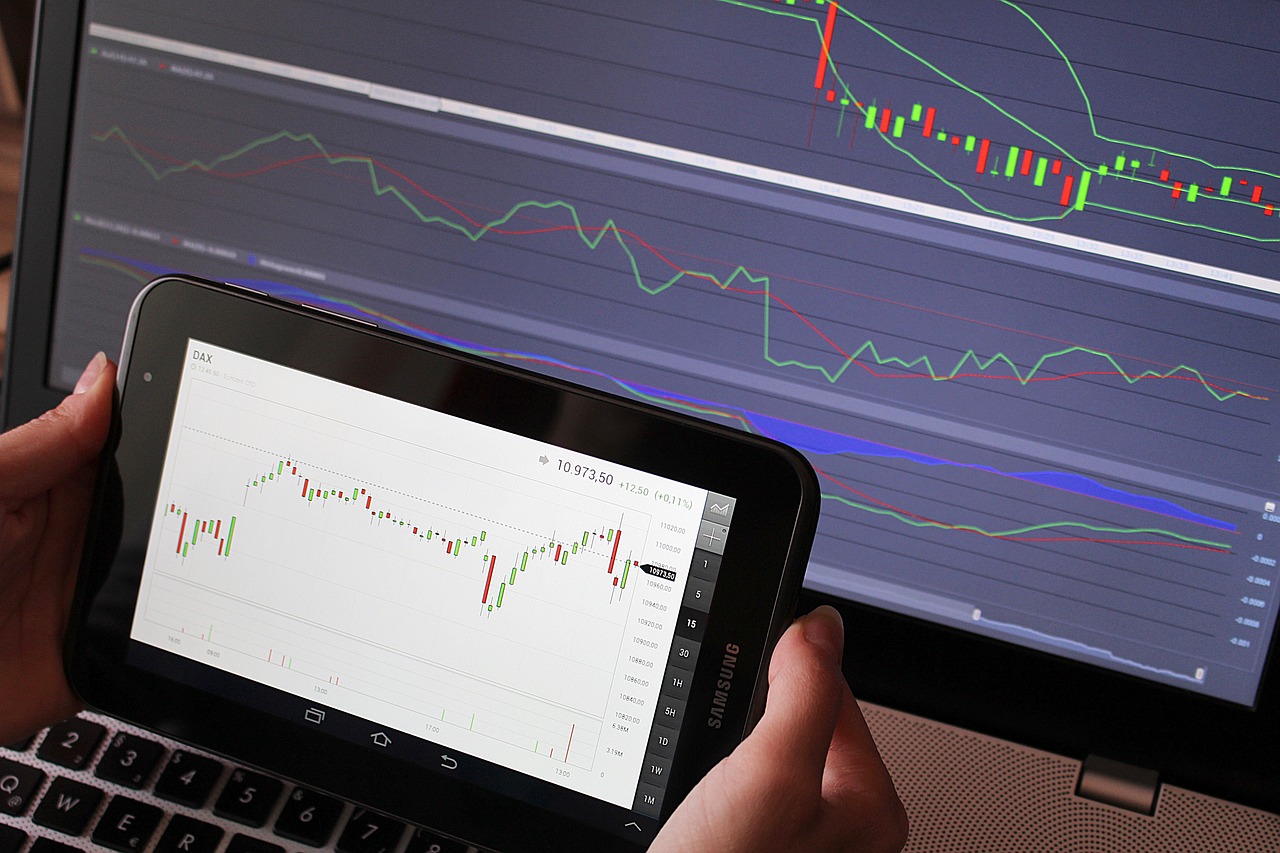How to Create Effective Crypto Trading Alerts
In the fast-paced world of cryptocurrency trading, having the right tools at your disposal can make all the difference. One of those tools is the ability to set up effective crypto trading alerts. These alerts serve as your personal market watchdogs, notifying you of significant price movements or changes in trading volume, allowing you to make informed decisions swiftly. Imagine being able to react to market shifts as they happen, rather than finding out after the fact. This article dives into the essential steps and strategies for setting up these alerts, ensuring you enhance your trading experience and navigate the volatile crypto market like a pro.
Before diving into the nitty-gritty of setting alerts, it's important to grasp what crypto trading alerts actually are. These notifications are designed to inform traders of significant market movements, whether it’s a sudden spike in price or a noteworthy change in trading volume. They act as your eyes and ears in the market, enabling you to optimize your trading strategies and respond promptly to market changes. Think of them as a lifeline in a sea of volatility, helping you stay afloat amidst the waves of price fluctuations.
Now that you understand what crypto trading alerts are, the next step is selecting a reliable platform to host these alerts. Not all platforms are created equal; they come with varying features that cater to different trading styles and preferences. To find the best fit for your needs, consider the following:
- Customization Options: Can you tailor alerts to your specific trading strategies?
- Real-Time Notifications: Does the platform provide instant alerts when market conditions change?
- Integration with Trading Tools: Can you seamlessly connect your alerts with other trading tools for enhanced data analysis?
Choosing the right platform can significantly enhance the effectiveness of your trading alerts, making it easier to stay informed and make timely decisions.
When evaluating alert platforms, it's crucial to pinpoint features that will best serve your trading needs. For instance, having the ability to customize alerts ensures that you only receive notifications that matter to you. Real-time notifications are essential for acting quickly in a market that can change in the blink of an eye. Furthermore, integration with trading tools can streamline your entire trading process, providing you with comprehensive data and insights right where you need them.
Another important consideration is whether to opt for mobile or desktop alerts. Mobile alerts offer the convenience of being notified on-the-go, making them ideal for traders who are often away from their desks. On the other hand, desktop alerts can provide more comprehensive data analysis, allowing you to dive deeper into the numbers when you have the time. Understanding your trading habits will guide you in making the right choice.
Integrating your alerts with trading tools can take your trading to the next level. This integration not only streamlines your trading process but also enhances your decision-making capabilities by providing all necessary data and insights in one place. Imagine having a dashboard that not only alerts you to market changes but also shows you relevant charts and analytics at the same time!
Once you've chosen your platform and understood its features, it's time to set up your alerts. Properly defining specific criteria for notifications is crucial. This step ensures that your alerts are not just noise but rather relevant and actionable insights that can lead to improved trading outcomes. Think of it as setting the rules of engagement for your trading strategy—clear, concise, and tailored to your needs.
Understanding the different types of alerts available can help you tailor your notifications to your trading strategies. There are several types of alerts that can be beneficial:
Price alerts notify traders when a cryptocurrency reaches a specified price point. This type of alert is essential for executing buy or sell orders at optimal times. For example, if you believe Bitcoin will surge past $50,000, setting a price alert at that threshold can help you capitalize on the moment without constantly monitoring the market.
Volume alerts inform traders of significant changes in trading volume. Monitoring volume can help identify potential price movements and trading opportunities in the market. A sudden spike in volume might indicate that a price change is imminent, prompting you to act swiftly.
Implementing best practices when using trading alerts can maximize their effectiveness. Here are a couple of strategies to consider:
- Set Realistic Thresholds: Avoid setting thresholds that are too close to current prices, as this can lead to unnecessary alerts.
- Regularly Review Alert Performance: Markets change rapidly, so it's essential to stay updated and ensure that your alerts remain relevant to your trading strategy.
Regularly reviewing and adjusting your alert settings is crucial. As the market fluctuates, staying updated ensures that your alerts remain effective. This practice can help you avoid missing out on key trading opportunities or, conversely, being overwhelmed by irrelevant notifications.
Alert fatigue can occur when traders receive too many notifications, leading to desensitization. Balancing the frequency and relevance of alerts is essential to maintain their effectiveness. Consider prioritizing alerts that align closely with your trading goals, so you stay engaged and responsive.
1. What are crypto trading alerts?
Crypto trading alerts are notifications that inform traders of significant market movements, helping them make timely decisions.
2. How do I set up alerts?
You can set up alerts through various trading platforms by defining specific criteria based on price points or trading volume.
3. Are mobile or desktop alerts better?
It depends on your trading habits. Mobile alerts provide convenience, while desktop alerts can offer more comprehensive data analysis.
4. How can I avoid alert fatigue?
To avoid alert fatigue, set realistic thresholds and prioritize alerts that are most relevant to your trading strategy.

Understanding Crypto Trading Alerts
Crypto trading alerts are notifications that serve as your personal assistant in the fast-paced world of cryptocurrency trading. Imagine you're at a concert, and the music suddenly changes; the alerts are your front-row seat tickets, letting you know when the market is about to hit a high note or take a nosedive. These alerts are designed to keep you informed about significant market movements, ensuring that you're always in the loop and ready to act.
Understanding the purpose and functionality of these alerts is crucial for optimizing your trading strategies. They can be tailored to notify you about various market conditions, such as price changes, trading volume spikes, or even news events that could impact your investments. By leveraging these alerts effectively, you can make timely decisions that could potentially enhance your trading outcomes.
There are several types of alerts you can set up, each serving a unique function. For instance, price alerts notify you when a cryptocurrency reaches a specific price point, enabling you to execute buy or sell orders at optimal times. On the other hand, volume alerts inform you of significant changes in trading volume, which can indicate potential price movements. Understanding these types of alerts and how they fit into your trading strategy is essential for navigating the volatile crypto market.
Moreover, the effectiveness of crypto trading alerts hinges on how well they are integrated into your trading routine. Think of them as the GPS for your trading journey; they guide you along the way, helping you avoid pitfalls and seize opportunities. By setting up alerts that align with your trading goals, you can ensure that you're always prepared to make informed decisions when it matters most.
In conclusion, crypto trading alerts are not just tools; they are your allies in the unpredictable world of cryptocurrency. By understanding their functionality and integrating them into your trading strategy, you can enhance your trading experience and make more informed decisions in this dynamic market.

Choosing the Right Platform
When it comes to crypto trading alerts, selecting the right platform is like choosing the right tool for a job. You wouldn't use a hammer to screw in a lightbulb, right? The same principle applies here. There are numerous platforms available, each boasting unique features and functionalities that can either enhance or hinder your trading experience. So, how do you navigate this sea of options? First, consider what you truly need from an alert system. Are you a day trader who requires real-time updates, or are you more of a long-term investor who prefers fewer, but more significant notifications?
To help you make an informed decision, here are some crucial factors to consider:
- Customization Options: The ability to tailor alerts to your specific trading strategy is essential. Look for platforms that allow you to set personalized criteria based on price movements, volume changes, or even specific market events.
- Real-Time Notifications: In the fast-paced world of cryptocurrency, timing is everything. Choose platforms that offer instant notifications via your preferred channels, whether that's through mobile apps, email, or desktop alerts.
- Integration with Trading Tools: A platform that seamlessly integrates with your existing trading tools can significantly streamline your workflow. This integration helps you analyze data and make decisions without jumping between multiple applications.
Another factor to consider is the platform's user interface. A clean, intuitive design can make a world of difference, especially when you need to act quickly. If the platform is cluttered or confusing, you might miss out on critical opportunities. Some platforms even offer demo accounts, allowing you to test their features before committing. This can be a game-changer, as it gives you a feel for the platform without any financial risk.
Finally, take a moment to read reviews and testimonials from other traders. Hearing about real experiences can provide valuable insights into the platform's reliability and effectiveness. Remember, the best platform for you is one that aligns with your trading style, offers the features you need, and enhances your overall trading experience.

Features to Look For
When diving into the world of crypto trading alerts, it’s essential to choose a platform that meets your unique trading needs. The right features can make a world of difference in how effectively you can respond to market changes. Here are some key features to consider:
Customization Options: Every trader has a different strategy and risk tolerance. Therefore, the ability to customize alerts according to your specific criteria is crucial. Look for platforms that allow you to set alerts based on various parameters such as price points, percentage changes, and even specific market conditions. This level of customization ensures that you only receive notifications that matter to you, preventing unnecessary distractions.
Real-Time Notifications: In the fast-paced world of cryptocurrency, timing is everything. Real-time notifications are vital as they provide updates instantly when market conditions change. Whether you’re using a mobile app or a desktop platform, ensure that the alerts you set up notify you without significant delays. This immediacy can mean the difference between a profitable trade and a missed opportunity.
Integration with Trading Tools: Another feature to look for is how well the alert system integrates with your existing trading tools. A seamless integration allows you to view alerts alongside your trading charts and analytics, making it easier to make informed decisions. For instance, if your alert platform can connect with trading bots or portfolio management tools, it can automate responses to certain alerts, enhancing your trading efficiency.
User-Friendly Interface: A cluttered and complicated interface can lead to confusion, especially when you need to act quickly. Opt for platforms that offer a clean, intuitive layout. A user-friendly interface not only makes it easier to set up alerts but also helps you manage them effectively as market conditions evolve. Remember, the easier it is to navigate the platform, the more likely you are to use it effectively.
Support and Resources: Lastly, consider the level of support and resources provided by the platform. Access to tutorials, customer support, and a community of traders can significantly enhance your trading experience. When you encounter issues or have questions, knowing that help is readily available can alleviate stress and keep you focused on trading.
In summary, when evaluating crypto trading alert platforms, focus on features that enhance customization, provide real-time updates, integrate with your trading tools, offer a user-friendly interface, and supply adequate support. These elements will help you stay ahead in the ever-changing cryptocurrency market, making your trading journey not just profitable but also enjoyable.
- What are crypto trading alerts? Crypto trading alerts are notifications that inform traders about significant market movements, helping them make timely trading decisions.
- How do I set up alerts? You can set up alerts by defining specific criteria such as price points or volume changes on your chosen trading platform.
- Can I customize my alerts? Yes, most platforms allow you to customize alerts based on your trading strategy and preferences.
- What should I do if I experience alert fatigue? To avoid alert fatigue, regularly review and adjust your alert settings to ensure they remain relevant and manageable.

Mobile vs. Desktop Alerts
When it comes to choosing between mobile and desktop alerts, it's essential to consider your trading habits and lifestyle. Think of mobile alerts as your trusty sidekick, always ready to notify you of the latest market movements, no matter where you are. Whether you're sipping coffee at a café or waiting in line at the grocery store, mobile alerts keep you connected to the crypto world. They provide a sense of immediacy and convenience, allowing you to react swiftly to market changes. Imagine receiving an alert on your phone that a cryptocurrency has hit your desired price point while you're out—this could be the difference between capitalizing on a great trade or missing out entirely.
On the other hand, desktop alerts can be likened to having a powerful command center at your disposal. When you're in front of your computer, you have access to a wealth of information and analytical tools that can enhance your trading decisions. Desktop alerts often come with more comprehensive data, allowing you to dive deep into market trends and make informed choices. They can display detailed charts, historical data, and multiple alerts simultaneously, giving you a broader perspective on the trading landscape.
However, choosing between these two options isn't just about convenience or data richness; it's about finding a balance that suits your trading style. Some traders prefer the quick, on-the-go notifications from their mobile devices, while others thrive on the in-depth analysis available on their desktops. A good approach might be to utilize both systems in tandem. For example, you could set up mobile alerts for immediate price changes and desktop alerts for more detailed analyses during your dedicated trading sessions.
In summary, the choice between mobile and desktop alerts boils down to your personal preferences and trading strategies. If you value flexibility and speed, mobile alerts might be your best bet. Conversely, if you prefer a more detailed approach and enjoy analyzing data, desktop alerts could be the way to go. Ultimately, the goal is to ensure that you are always in the loop and can make timely decisions in the fast-paced world of cryptocurrency trading.
- What are crypto trading alerts? - Crypto trading alerts are notifications that inform traders of significant market movements, helping them make timely decisions.
- How do I set up trading alerts? - You can set up trading alerts through various platforms by defining specific criteria that trigger notifications.
- Are mobile alerts better than desktop alerts? - It depends on your trading style. Mobile alerts offer convenience, while desktop alerts provide comprehensive data analysis.
- How often should I review my alerts? - Regularly reviewing your alerts is crucial to ensure they remain relevant and effective, especially as market conditions change.
- What is alert fatigue? - Alert fatigue occurs when traders receive too many notifications, leading to desensitization and reduced effectiveness of alerts.

Integration with Trading Tools
Integrating your crypto trading alerts with trading tools can be a game-changer in how you approach the volatile cryptocurrency market. Imagine having all your crucial trading information streamlined into one cohesive platform, making your decision-making process not just easier but also more effective. When your alerts are synced with trading tools, you can instantly access comprehensive data and insights without having to jump between multiple applications. This seamless flow of information can significantly enhance your trading strategies.
One of the primary benefits of this integration is the ability to analyze market conditions in real-time. For instance, if you're using a trading platform that allows for charting and technical analysis, having alerts that trigger directly within that environment means you can act quickly. You won't have to waste precious seconds switching back and forth between apps, which can often lead to missed opportunities. Instead, you can focus on making informed decisions based on the most current data available.
Moreover, many trading platforms offer customizable dashboards that can display your alerts alongside key metrics, such as price movements, trading volume, and market sentiment. This holistic view allows you to gauge the overall market landscape effectively. You can even set alerts based on specific indicators, like moving averages or RSI (Relative Strength Index), which can help you identify trends and potential reversals. The integration of alerts with such tools not only enhances your responsiveness but also provides you with a more strategic approach to trading.
To illustrate this point, consider a scenario where you set a price alert for Bitcoin at $30,000. When that alert triggers, you can immediately check your integrated trading tool to analyze the price chart, check for volume spikes, and evaluate other technical indicators. This capability can help you decide whether to buy, sell, or hold based on a more comprehensive analysis rather than relying solely on the alert. It's like having a personal trading assistant that keeps you informed and prepared.
In summary, integrating your crypto trading alerts with trading tools is not just a matter of convenience; it's about enhancing your trading capabilities. By consolidating your information and analysis into a single platform, you can make quicker, more informed decisions that can significantly impact your trading success. So, if you're serious about improving your trading experience, consider looking for platforms that offer robust integration capabilities.
- What are crypto trading alerts? Crypto trading alerts are notifications that inform traders about significant market movements, helping them make timely decisions.
- Why should I integrate alerts with trading tools? Integration allows for real-time data analysis, enabling quicker and more informed trading decisions.
- Can I customize my trading alerts? Yes, most platforms allow you to customize alerts based on specific criteria such as price points or trading volume.
- How do I avoid alert fatigue? To avoid alert fatigue, set realistic thresholds and regularly review your alert settings to ensure they remain relevant.

Setting Up Alerts
Setting up trading alerts is not just a technical task; it's a strategic move that can significantly enhance your trading experience. Imagine standing at the edge of a bustling market, where prices fluctuate like a rollercoaster. You wouldn't want to miss that perfect moment to buy or sell, right? This is where effective alert systems come into play. To begin with, you need to define specific criteria that will trigger your alerts. This means thinking about what factors are most important to you in your trading strategy. Are you looking to be notified when a cryptocurrency reaches a certain price? Or perhaps you want to keep an eye on sudden spikes in trading volume? Whatever your focus, clearly defining these parameters is crucial.
Moreover, customization is key. Most platforms allow you to tailor your alerts based on your preferences. You can choose to receive notifications via email, SMS, or even push notifications on your mobile device. This flexibility ensures that you can stay updated no matter where you are. For instance, if you're at work, a discreet email alert might be more appropriate than a loud phone notification. Additionally, consider the timing of your alerts. Setting them for specific times or market conditions can help you avoid unnecessary disturbances while ensuring you don’t miss critical movements.
Another important aspect of setting up alerts is to ensure that they are relevant and actionable. For example, if you set an alert for a price drop of 10% on a cryptocurrency that you don’t currently hold, it might not serve your trading strategy effectively. Instead, focus on alerts that will inform you about assets you are actively trading or considering. As you set up your alerts, it’s also beneficial to test them. Most platforms allow you to simulate alerts to see how they function. This trial run can help you fine-tune your settings and ensure that you’re not overwhelmed by irrelevant notifications.
Lastly, remember to keep your alerts dynamic. The cryptocurrency market is notorious for its volatility, and what worked yesterday might not be effective tomorrow. Regularly reviewing and adjusting your alert settings will help you stay in tune with market conditions and your trading goals. By taking these steps, you can create a robust alert system that not only keeps you informed but also empowers you to make timely and informed trading decisions.
- What are crypto trading alerts? Crypto trading alerts are notifications that inform traders of significant market movements, helping them make timely decisions.
- How do I set up alerts? You can set up alerts by defining specific criteria such as price points or trading volume on a reliable trading platform.
- Can I customize my alerts? Yes, most platforms allow you to customize alerts based on your preferences, including notification methods and timing.
- What should I do if I experience alert fatigue? To avoid alert fatigue, ensure that your alert settings are relevant and not overwhelming. Regularly review and adjust them as needed.

Types of Alerts
When navigating the ever-changing waters of the cryptocurrency market, understanding the various available to traders is essential. These alerts serve as your lifebuoy, keeping you informed and ready to act when opportunities arise. Let's dive into the most common types of alerts that can significantly enhance your trading strategy.
First up are Price Alerts. These alerts notify you when a specific cryptocurrency reaches a predetermined price point. Imagine you’ve got your eye on Bitcoin, and you know that $50,000 is your sweet spot for buying. With a price alert set, you’ll receive a notification the moment Bitcoin hits that magic number. This type of alert is crucial for executing buy or sell orders at optimal times, allowing you to capitalize on market movements without constantly monitoring prices.
Next, we have Volume Alerts. These alerts inform you of significant changes in trading volume, which can often precede price movements. For instance, if a cryptocurrency suddenly sees a spike in trading volume, it could indicate a potential price breakout or a reversal. By keeping an eye on volume alerts, you can identify trading opportunities that others might miss. This is particularly useful in a volatile market where timing is everything.
In addition to these, there are also News Alerts. These alerts notify you of important news related to specific cryptocurrencies or the market as a whole. With the crypto landscape being so heavily influenced by news and events, staying updated can give you an edge. For example, if a major exchange announces the listing of a new coin, a news alert can help you react quickly before the price surges.
Moreover, you might consider Technical Alerts. These are based on technical indicators, such as moving averages or RSI levels. If you’re a trader who relies on technical analysis, setting alerts for these indicators can help you stay ahead of market trends. For instance, you might set an alert to notify you when a cryptocurrency crosses above its 50-day moving average, signaling a potential upward trend.
Lastly, let’s not forget about Custom Alerts. Many trading platforms allow you to create alerts tailored to your specific needs. Whether it’s a combination of price, volume, and news events, custom alerts can be a powerful tool in your trading arsenal. By setting up these personalized notifications, you can ensure that you’re only alerted to the information that matters most to you.
In summary, understanding the various types of alerts—price, volume, news, technical, and custom—can significantly enhance your trading experience. Each type serves a unique purpose, and leveraging them effectively can lead to more informed decisions in the fast-paced world of cryptocurrency trading. As you set up your alerts, consider your trading strategy and choose the types that align best with your goals.
- What are crypto trading alerts? Crypto trading alerts are notifications that inform traders of significant market movements, helping them make timely decisions.
- How do I set up price alerts? Most trading platforms allow you to set price alerts by specifying the cryptocurrency and the target price you want to be notified about.
- Can I customize my alerts? Yes, many platforms offer customization options, allowing you to tailor alerts to your specific trading needs.
- What should I do if I experience alert fatigue? To avoid alert fatigue, consider adjusting the frequency and relevance of your alerts to ensure you only receive the most critical notifications.

Price Alerts
This article explores the essential steps and strategies for setting up effective crypto trading alerts that can enhance your trading experience and help you make informed decisions in the volatile cryptocurrency market.
Crypto trading alerts are notifications that inform traders of significant market movements. Understanding their purpose and functionality is crucial for optimizing trading strategies and ensuring timely responses to market changes.
Selecting a reliable platform for crypto trading alerts is vital. Various platforms offer different features, and understanding these can help traders find the best fit for their specific needs and trading styles.
When evaluating alert platforms, consider features like customization options, real-time notifications, and integration with trading tools. These elements can significantly enhance the effectiveness of your trading alerts.
Deciding between mobile and desktop alerts involves understanding your trading habits. Mobile alerts offer convenience, while desktop alerts can provide more comprehensive data analysis.
Integrating alerts with trading tools can streamline your trading process. This integration allows for better decision-making by providing comprehensive data and insights directly within your trading environment.
Properly setting up alerts involves defining specific criteria for notifications. This step ensures that alerts are relevant and actionable, ultimately improving trading outcomes.
Understanding the different types of alerts available can help traders tailor their notifications to their trading strategies, ensuring they receive the most pertinent information in a timely manner.
Price alerts are a fundamental tool for any crypto trader. They notify you when a cryptocurrency reaches a specified price point, allowing you to make timely buy or sell decisions. Imagine setting a price alert for Bitcoin at $30,000; if the price hits that mark, you receive a notification instantly. This immediate feedback can be the difference between capitalizing on a spike or missing out on a potential profit.
When setting up price alerts, it’s essential to consider a few key factors:
- Market Volatility: Cryptocurrencies are known for their rapid price fluctuations. Setting alerts too close to the current price can lead to frequent notifications that may not be actionable.
- Trading Goals: Align your price alerts with your overall trading strategy. Are you looking to take profits, cut losses, or enter new positions? Your alerts should reflect these objectives.
- Timing: Consider the time of day when you want to receive alerts. If you trade primarily during certain hours, set alerts accordingly to avoid unnecessary disruptions.
Moreover, many platforms allow you to customize how you receive these alerts—whether via SMS, email, or even direct notifications on your trading app. This flexibility ensures you stay informed regardless of your location. By effectively utilizing price alerts, you can enhance your trading strategy, making informed decisions that align with market movements.
Implementing best practices when using trading alerts can maximize their effectiveness. Strategies include setting realistic thresholds and regularly reviewing alert performance to adapt to market changes.
Regularly reviewing and adjusting alert settings is crucial. Markets change rapidly, and staying updated ensures that alerts remain relevant and effective for your trading strategy.
Alert fatigue occurs when traders receive too many notifications, leading to desensitization. Balancing the frequency and relevance of alerts is essential to maintain their effectiveness.
- What is a price alert? A price alert is a notification that informs you when a cryptocurrency reaches a specific price point you have set.
- How do I set up a price alert? Most trading platforms allow you to set price alerts in their settings. You can usually specify the cryptocurrency, the target price, and how you want to be notified.
- Can I set multiple price alerts? Yes, you can set multiple price alerts for different cryptocurrencies and price points to monitor various market conditions.
- What should I do if I receive a price alert? When you receive a price alert, evaluate the market conditions and your trading strategy to decide whether to buy, sell, or hold your position.

Volume Alerts
Volume alerts are a crucial tool in the arsenal of any crypto trader. They notify you when there are significant changes in trading volume, which can often precede price movements. Think of volume as the heartbeat of the market; when it spikes, it can indicate something important is happening. For instance, if a cryptocurrency suddenly experiences a surge in trading volume, it might signal that a breakout is imminent, or conversely, that a sell-off is underway. Ignoring these signals could mean missing out on lucrative trading opportunities or, worse, facing unexpected losses.
When setting up volume alerts, it's essential to define what constitutes a "significant" change. This could vary depending on your trading strategy and the specific cryptocurrency you are monitoring. For example, you might want to set alerts for a 50% increase in volume over a 24-hour period, or perhaps a sudden spike that exceeds the average trading volume over the past week. By tailoring your alerts to your trading style, you can ensure that you receive notifications that are both relevant and actionable.
Moreover, integrating volume alerts with your overall trading strategy can provide a more comprehensive view of market dynamics. Here’s how you can leverage volume alerts effectively:
- Combine with Price Alerts: Use volume alerts in conjunction with price alerts to confirm potential buy or sell signals. For example, if a cryptocurrency's price rises significantly alongside increased volume, it may be a strong buy signal.
- Monitor Market Sentiment: High trading volume can indicate heightened interest or panic among traders. Understanding market sentiment through volume can help you make more informed decisions.
- Set Thresholds: Determine specific volume thresholds that trigger alerts. This will help you avoid unnecessary notifications and focus on the most critical movements.
In summary, volume alerts are not just notifications; they are powerful indicators that can enhance your trading strategy. By paying attention to trading volume, you can position yourself ahead of market trends and make more informed decisions. Remember, in the fast-paced world of cryptocurrency trading, every second counts, and being alerted to significant volume changes could be the difference between a missed opportunity and a profitable trade.
What are volume alerts?
Volume alerts are notifications that inform traders of significant changes in the trading volume of a cryptocurrency. These alerts can indicate potential price movements and trading opportunities.
How can I set up volume alerts?
You can set up volume alerts through various trading platforms. Look for features that allow you to customize alerts based on specific volume thresholds or percentage changes.
Why are volume alerts important?
Volume alerts are important because they help traders identify potential market movements. A sudden increase in volume can signal a breakout or a sell-off, allowing traders to make timely decisions.
Can I use volume alerts with other types of alerts?
Absolutely! Combining volume alerts with price alerts can provide a more comprehensive view of market dynamics, allowing you to confirm buy or sell signals.

Best Practices for Using Alerts
When it comes to maximizing the effectiveness of your crypto trading alerts, implementing best practices is essential. Think of alerts as your personal trading assistants; if they aren't set up correctly, they might just end up being a noisy distraction rather than a helpful tool. So, how do you ensure these alerts serve you well? First and foremost, it's crucial to set realistic thresholds. If you set your alerts too narrowly, you might find yourself inundated with notifications that don't really matter. Instead, consider setting broader thresholds that still align with your trading strategy. This approach allows you to focus on significant market movements without being overwhelmed.
Another key practice is to regularly review and adjust your alert settings. The cryptocurrency market is notoriously volatile, and what worked last month might not be effective today. By staying proactive and revisiting your alert criteria, you ensure that your notifications remain relevant and actionable. For instance, if a particular cryptocurrency has been consistently trading within a certain range, it might be time to adjust your alerts accordingly to capture new opportunities or avoid false alarms.
Moreover, avoiding alert fatigue is vital. This phenomenon occurs when traders receive too many notifications, leading to a sense of desensitization. Imagine being in a crowded room where everyone is shouting your name; eventually, you tune it out. To prevent this, balance the frequency and relevance of your alerts. You might consider categorizing them based on importance: critical alerts that require immediate attention, and secondary alerts that can be reviewed later. This way, you can maintain your focus on what truly matters in your trading journey.
In addition to these practices, integrating your alerts with your trading tools can enhance your decision-making process. For instance, if your trading platform allows it, try to connect your alerts to your trading history or market analysis tools. This integration can provide a more comprehensive view of your trading environment, allowing you to make informed decisions quickly. Just like a well-oiled machine, having all parts work together can streamline your trading experience.
Finally, don't forget to customize your alerts to fit your individual trading style. Some traders thrive on high-frequency trading, while others prefer a more laid-back approach. Tailoring your alerts to reflect your style can make a significant difference in how effectively you respond to market changes. Remember, the goal is to create a system that works for you, not against you.
- What are crypto trading alerts? Crypto trading alerts are notifications that inform traders about significant market movements, helping them make informed decisions.
- How often should I review my alert settings? It’s advisable to review your alert settings regularly, ideally every few weeks or after significant market changes.
- Can I customize my alerts? Yes, most trading platforms offer customization options that allow you to tailor alerts based on your trading strategy.
- What should I do if I experience alert fatigue? To combat alert fatigue, adjust your alert settings to reduce the frequency and focus on more critical notifications.

Regular Review and Adjustment
In the fast-paced world of cryptocurrency trading, of your trading alerts is not just a suggestion—it's a necessity. Markets are dynamic, and what worked yesterday may not be effective today. By routinely assessing your alert settings, you can ensure that they remain aligned with your trading goals and the ever-changing market conditions.
Imagine trying to navigate a ship without adjusting the sails based on the wind direction. Similarly, if you don’t review your alerts, you risk missing out on critical opportunities or, worse, acting on outdated information. So, how often should you review your alerts? A good rule of thumb is to check them at least once a week, but during periods of high volatility, daily reviews might be warranted.
During these reviews, consider the following key factors:
- Market Trends: Are there any new trends or patterns emerging in the market that your alerts should reflect?
- Performance Metrics: How well have your alerts been performing? Are you receiving too many irrelevant notifications?
- Personal Trading Goals: Have your trading objectives changed? Make sure your alerts align with your current strategy.
Furthermore, you might find it helpful to keep a performance log of your alerts. This log can include information such as:
| Date | Alert Type | Action Taken | Outcome |
|---|---|---|---|
| 01/01/2023 | Price Alert | Buy | Profit |
| 01/05/2023 | Volume Alert | Sell | Loss |
This table serves as a valuable reference, helping you identify which alerts yield the best results and which may need tweaking. By analyzing this data, you can make informed adjustments to your alert settings, enhancing their relevance and effectiveness.
In summary, the key to successful trading alerts lies in adaptability. By committing to regular reviews and adjustments, you empower yourself to stay ahead of the curve, making the most out of your trading strategies. So, grab your trading journal, set aside some time each week, and ensure your alerts are working for you, not against you!
Q1: How often should I review my crypto trading alerts?
A1: It's advisable to review your alerts at least once a week, but during high volatility, daily reviews may be necessary.
Q2: What should I look for during my review?
A2: Focus on market trends, performance metrics of your alerts, and whether they align with your current trading goals.
Q3: Can I automate the review process?
A3: While some platforms offer automated reporting features, regular manual reviews are essential to ensure your alerts remain relevant.
Q4: How can I avoid alert fatigue?
A4: Set realistic thresholds and limit the frequency of alerts to ensure that you only receive the most pertinent notifications.

Avoiding Alert Fatigue
In the fast-paced world of cryptocurrency trading, alert fatigue can sneak up on even the most seasoned traders. Imagine you’re in a crowded room where everyone is shouting at the top of their lungs. It becomes impossible to focus on any single voice, right? That’s exactly what happens when you’re bombarded with too many alerts. To maintain your trading edge, it's essential to strike a balance between staying informed and avoiding the overwhelming noise that can lead to missed opportunities.
So, how do you keep your alerts effective without drowning in notifications? Start by evaluating the relevance of each alert. Ask yourself: Is this alert truly beneficial to my trading strategy? If the answer is no, consider disabling it. By curating your alerts, you can ensure that each notification serves a purpose and contributes to your decision-making process.
Another strategy is to set realistic thresholds for your alerts. Instead of receiving notifications for every minor price fluctuation, focus on significant movements that align with your trading goals. For example, you might want to set price alerts only for changes that exceed a certain percentage or volume alerts for spikes that indicate unusual market activity. This way, you’ll receive fewer, but more meaningful notifications.
Additionally, consider the timing of your alerts. If you're trading on a specific schedule, such as during market hours, tailor your alerts to those times. You can also use features like smart notifications that adapt based on your trading habits and preferences. Many platforms offer this functionality, allowing you to receive alerts only when they matter the most.
Lastly, don’t forget to regularly review your alert settings. The cryptocurrency market is notorious for its volatility, and what was once a relevant alert may become obsolete as market conditions change. By taking the time to adjust your alerts, you can ensure they remain effective and aligned with your trading strategy. Remember, the goal is to enhance your trading experience, not complicate it!
In summary, avoiding alert fatigue is all about curation, realism, timing, and regular review. By implementing these strategies, you can keep your trading alerts sharp and focused, helping you navigate the turbulent waters of cryptocurrency trading with confidence.
- What is alert fatigue? Alert fatigue occurs when traders receive too many notifications, leading to desensitization and potentially missing important alerts.
- How can I reduce alert fatigue? You can reduce alert fatigue by curating your alerts, setting realistic thresholds, adjusting the timing, and regularly reviewing your alert settings.
- What types of alerts should I prioritize? Focus on alerts that are significant to your trading strategy, such as price and volume alerts that indicate potential trading opportunities.
Frequently Asked Questions
- What are crypto trading alerts?
Crypto trading alerts are notifications that keep traders informed about significant market movements. They help you stay on top of price changes, volume spikes, and other important metrics, enabling you to make timely trading decisions.
- How do I choose the right platform for crypto trading alerts?
Selecting the right platform involves evaluating your trading style and needs. Look for platforms that offer customization options, real-time notifications, and integration with your existing trading tools to enhance your trading experience.
- What types of alerts should I set up?
It's essential to set up various types of alerts, such as price alerts that notify you when a cryptocurrency hits a specific price point, and volume alerts that inform you of significant trading volume changes. These alerts can help you identify potential trading opportunities.
- How can I avoid alert fatigue?
To avoid alert fatigue, balance the frequency and relevance of your notifications. Set realistic thresholds and regularly review your alert settings to ensure they remain effective without overwhelming you with too many alerts.
- How often should I review my alert settings?
Regularly reviewing your alert settings is crucial, especially in the fast-paced crypto market. Consider checking them at least once a month to adapt to market changes and ensure your alerts continue to serve your trading strategy effectively.



















